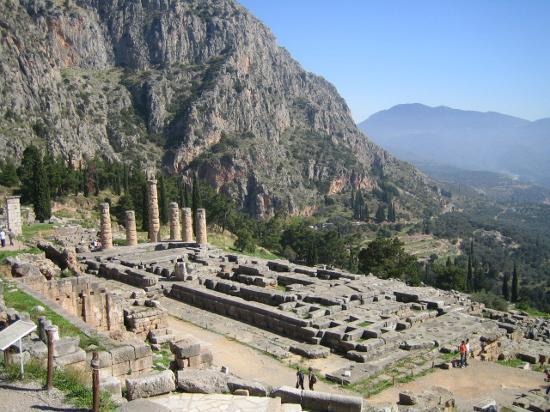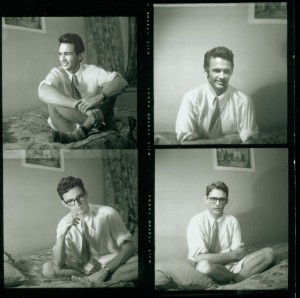February 13, 2013 at 9:59 am
As spotted at Futility Closet, a letter from Petrarch to Zanobi da Strada, April 1, 1352:
Let them teach who can do nothing better, whose qualities are laborious application, sluggishness of mind, muddiness of intellect, prosiness of imagination, chill of the blood, patience to bear the body’s labors, contempt of glory, avidity for petty gains, indifference to boredom. You see how far these qualities are from your character. Let them watch boys’ fidgety hands, their wandering eyes, their sotto voce whisperings who delight in that task, who enjoy dust and noise and the clamor of mingled prayers and tears and whimperings under the rod’s correction. Let them teach who love to return to boyhood, who are shy of dealing with men and shamed by living with equals, who are happy to be set over their inferiors, who always want to have someone to terrify, to afflict, to torture, to rule, someone who will hate and fear them. That is a tyrannical pleasure, such as, according to the story, pervaded the fierce spirit of that old man of Syracuse, to be the evil solace of his deserved exile. But you, a man of parts, merit a better occupation. Those who instruct our youth should be like those ancient authors who informed us in our own early age; as those who first aroused our young minds with noble examples, so should we be to our successors. Since you can follow the Roman masters, Cicero and Virgil, would you choose Orbillius, Horace’s ‘flogging-master’? What is more, neither grammar nor any of the seven liberal arts is worth a noble spirit’s attention throughout life. They are means, not ends …
Zanobi, a poor Florentine schoolmaster, was so affected by his friend’s words that he gave up teaching and became a government official. Three years later he was crowned poet laureate of Pisa, annoying Petrarch, who in 1341 had been crowned the first laureate since antiquity in Rome.
By zakbos
|
Posted in Great Personalities, Other Publications
|
Tagged Petrarch
|
February 7, 2013 at 5:13 pm
The Core presents a poem by Dan Beachy-Quick titled The Cricket and The Grasshopper, named after the poem by Romantic poet John Keats, whose work is studied in the CC202 Core class. Here is the Dan B-Q poem:
The senseless leaf in the fevered hand
Grows hot, near blood-heat, but never grows
Green. Weeks ago the dove’s last cooing strain
Settled silent in the nest to brood slow
Absence from song. The dropped leaf cools
On the uncut grass, supple still, still green,
Twining still these fingers as they listless pull
The tangle straight until the tangle tightens
And the hand is caught, another fallen leaf.
The poetry of the earth never ceases
Ceasing — one blade of grass denies belief
Until its mere thread bears the grasshopper’s
Whole weight, and the black cricket sings unseen,
Desire living in a hole beneath the tangle’s green.
For the source of poem, Poetry Foundation, visit http://bit.ly/VKdAsi
To bring to attention the references that Dan B-Q makes, here is John Keat's poem of the same name:
The poetry of earth is never dead:
When all the birds are faint with the hot sun,
And hide in cooling trees, a voice will run
From hedge to hedge about the new-mown mead:
That is the grasshopper's -- he takes the lead
In summer luxury, -- he has never done
With his delights, for when tired out with fun,
He rests at ease beneath some pleasant weed.
The poetry of earth is ceasing never:
On a lone winter evening, when the frost
Has wrought a silence, from the stove there shrills
The Cricket's song, in warmth increasing ever,
And seems to one in drowsiness half lost,
The Grasshopper's among some grassy hills.
By mdimov
|
Posted in Academics, Art, Community, Curriculum, Great Ideas, Great Personalities
|
Tagged build, expand, influence, inspiration, John Keats, new, old, poem, poet, poetry, reference, twist
|
February 7, 2013 at 4:55 pm

There will be a special meeting TONIGHT, Thursday February 7th, for students interested in the Summer 2013 program in Greece, about which details appear below. The information session with the "BU Philhellenes" will take place at 6 PM in CAS Room 214.
Next Wednesday, February 13th, an info sessions specifically for Core students will be held next at 3 PM in CAS room 119.
* * * *
BU/American College of Greece Summer Program 2013
- Cost: Estimated at ca. $5,500 for the whole program (including travel and accommodations but not food). Scholarships to reduce the cost by at least $2000 will be available to many students.
- Credit: The courses will carry approved transfer credit (from ACG to BU) for two courses. Courses: 1) Intro Modern Greek, 2) Greek Art in Athens
- Faculty: BU's Kelly Polychroniou will teach Modern Greek. ACG has a distinguished senior faculty member who will teach the art history course.
- Living Situation: Students will live in the apartment-style residences at ACG. They are new and excellent.
- Application Process: Unofficial transcript, brief statement of why student wants to study in Greece (one page), copy of a paper submitted for a class.
- Deadline: Due March 1 to the Classics department or to Core. Application for the program is considered application for a scholarship.
- Eligibility: Any BU student is eligible.
- Dates: June 23-July 26, 2013
- Future: We plan to run the program yearly, alternating modern and ancient Greek. Steve Esposito will lead the program next year and teach ancient Greek.
- Websites: http://www.bu.edu/classics/undergraduate/study-abroad-in-greece/; http://www.acg.edu/
- Contact: Any student with questions can contact ljs@bu.edu
Click here to download the info sheet / application in PDF format.
By CAS Core Curriculum
|
Posted in Uncategorized
|
Tagged classics, Greece, Summer
|





